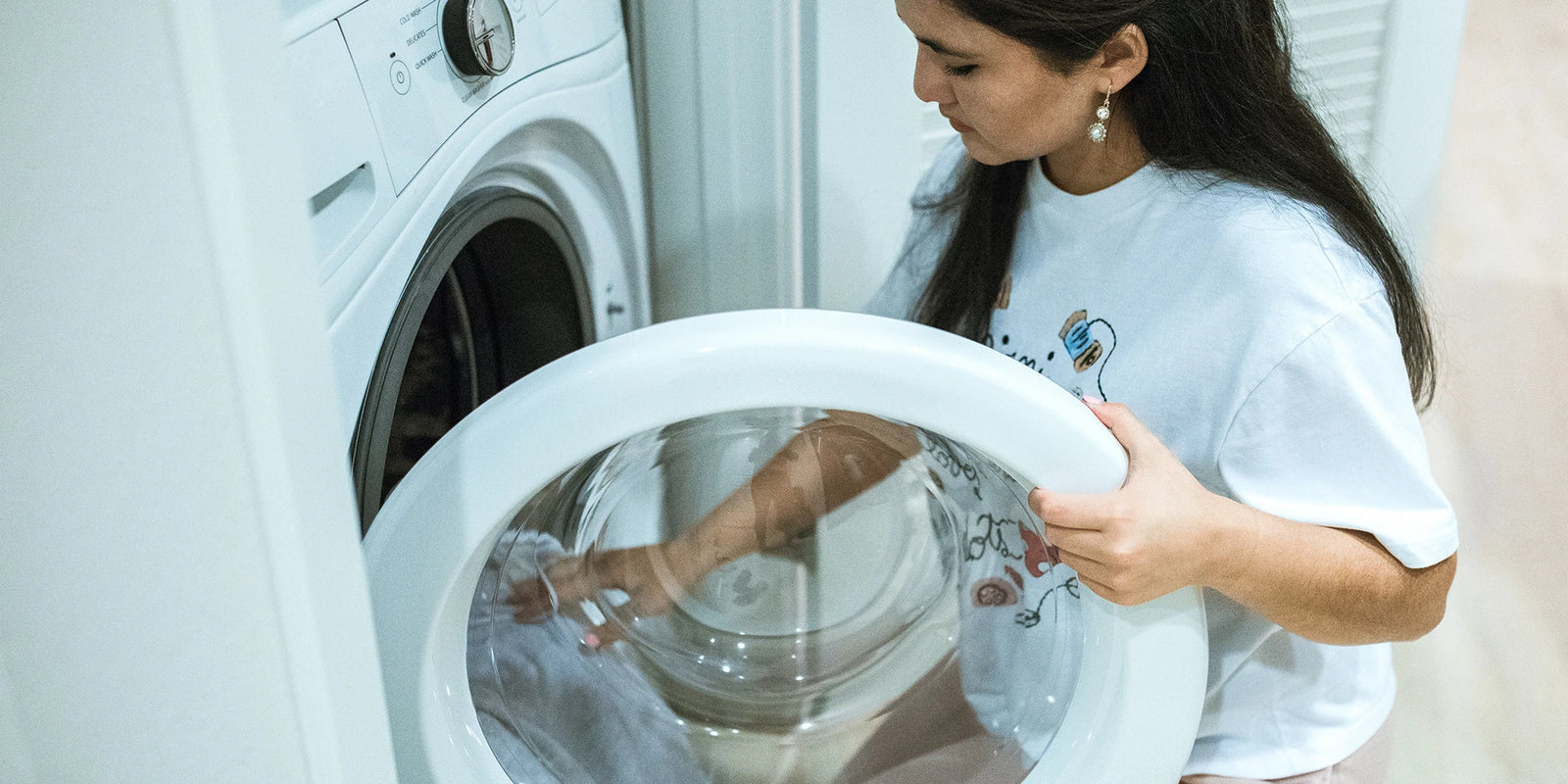Clean clothes start with using a clean washing machine. Washing machines, if not cleaned regularly, can house mildew, mold, fragrance oils, and hard water deposits. Like any other type of cleaning, you want to make sure that all of your tools are clean when you start a load of laundry.
Read on to learn how to clean a washing machine using baking soda, vinegar, and oxygen cleaner.
Review the user’s manual for the manufacturer’s instructions
Always check your manufacturer’s instruction manual before cleaning your washing machine, as each machine may have differing recommendations. Our recommended method below should work for the majority of household washing machines, but you should always defer to the user manual.
Don’t have your user’s manual on hand? Quite a few washing machine manuals are available on manufacturer websites, so we’d encourage you to run a quick search for specifics for your particular machine.
Have one of these brands? Find your washing machine manual here:
How often should I clean my washing machine?
You should clean your washing machine every six months, or as needed. If you use your machine often or frequently wash very large or dirty loads, you may need to clean your machine more often. Regular cleaning and maintenance will keep your machine fresh, meaning you won’t have to deep clean it as often.
What is the best washing machine cleaner?
Many brands, such as Affresh and Tide, offer pre-made washing machine cleaners. These products often contain petroleum-derived ingredients such as PEG. They may also contain proprietary “fragrance” blends that allow them to contain a wide variety of undisclosed ingredients. In the United States, hundreds of ingredients in the "fragrance" family have never been tested for their impact.
Pre-made washing machine cleaners are simply not necessary to effectively clean a washing machine. Common household ingredients like vinegar and baking soda act as non-toxic, eco-friendly washing machine cleaners.
We do not recommend using bleach to clean your washing machine or other parts of your home. While bleach is commonly used as a disinfectant, it is toxic to both humans and the environment. Mixing bleach with other chemicals like ammonia or vinegar can create toxic chlorine gas. Moreover, disinfection isn’t necessary. Cleaning your machine regularly will remove the buildup that causes odors.
Homemade washing machine cleaner
We recommend using vinegar, baking soda (or washing soda), and sodium percarbonate bleach alternative to effectively clean your washing machine.
Vinegar is a powerful natural deodorizer, degreaser, and descaler. Just be careful if your machine has a rubber seal, as consistent use of vinegar can erode the seal. We recommend checking your usual manual for directions.
Baking soda (sodium bicarbonate) and washing soda (sodium carbonate) are mineral-based cleaners that are effective in clearing away deposits that have been loosened with vinegar. They are also great deodorizers, and we use both ingredients in our Laundry Powder.
Sodium percarbonate is a combination of washing soda and hydrogen peroxide that is commonly used as an eco-friendly bleach alternative. It is an oxidizing agent, meaning that it breaks up organic compounds like oil, hair, and mold. Sodium percarbonate is a key ingredient in our Oxygen Brightener.
How to clean a stinky washing machine
You can thoroughly clean your washing machine with a combination of hot-water wash cycles and hands-on cleaning using a combination of vinegar, baking soda, and sodium percarbonate. In addition, you will want a few cleaning cloths or rags, a scrubbing sponge or brush, and a toothbrush to reach all the surfaces on the inside and outside of your machine.
Step 1: Empty the washing machine
Remove any clothes or other items that may be in the machine. Make sure there isn’t any detergent or fabric softener in the dispenser drawer.
Step 2: Run a cycle with vinegar
Pour two cups of vinegar into the detergent dispenser. If it doesn’t all fit or if your machine doesn’t have a dispenser drawer, add the vinegar directly to the drum.
If your machine has a preset cleaning cycle, use it. Otherwise, run a cycle using the hottest temperature setting available. If your machine has a soak option, include a 20–30 minute soak before rinsing out the vinegar.

Step 3: Clean the exterior of the machine
Wipe down the outside of your machine while the wash cycle is running. A rag and all-purpose cleaning spray should get the job done. Be sure to clean the top, sides, door, and any buttons and dials. Just be careful not to press any buttons that will interrupt your current wash cycle, especially on machines with touch-sensitive panels.
Step 4: Clean the drum, rubber seal, and interior of the machine
When the first cycle is finished, wipe down the inside of the machine using vinegar. You can either apply vinegar directly to a rag or use a refillable spray bottle to spray vinegar onto the interior surfaces. Be sure to thoroughly clean every part of the machine, including hard-to-reach areas. Use a toothbrush to scrub small crevices.
For top-loading machines, make sure you clean the rubber seal around the inside of the door where dirt, oils, and mold can build up.
For front-loading machines, you want to clean the ledge around the top edge of the drum, where water may not reach during the cleaning cycle.
Step 5: Clean the dispenser drawer
Scrub the fabric softener and detergent dispensers using vinegar and a toothbrush or small scrubbing sponge. These parts may be removable in some machines, making them easier to clean. Make sure you reattach them before running the next cycle.
Step 6: Clean your agitator
If your machine has an agitator, you may want to remove it and give it a deep cleaning. This takes a bit more work and a few tools. First, unplug the machine from the wall. If the agitator has a cap, remove it, then loosen the bold inside the agitator to detach it from the base of the machine. You should then be able to lift the agitator from the machine.
Use the remaining vinegar to scrub the agitator and the exposed base of the drum with vinegar using a rag, scrubbing sponge, or brush. Once it’s thoroughly cleaned, put the agitator back in the machine, reattach it, and replace the cap. Then plug the machine back into the wall.
Step 7: Run a cycle with baking soda and oxygen cleaner
Pour one cup of baking soda and 1/4 of a cup of Oxygen Brightener directly into the drum. Run another full cycle of hot water.


